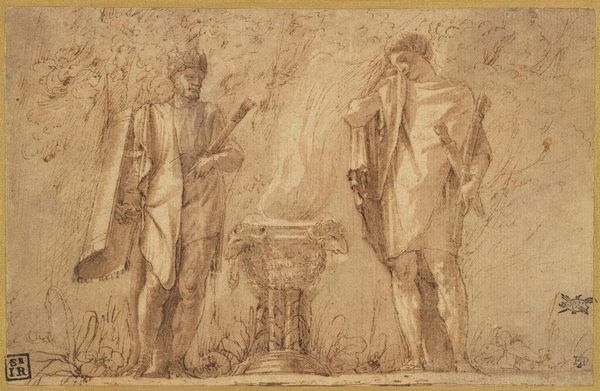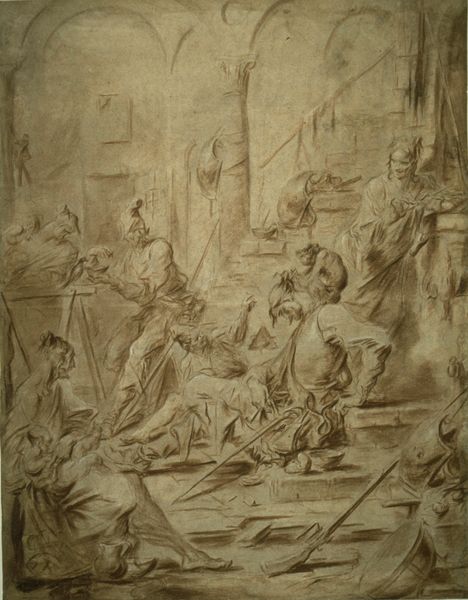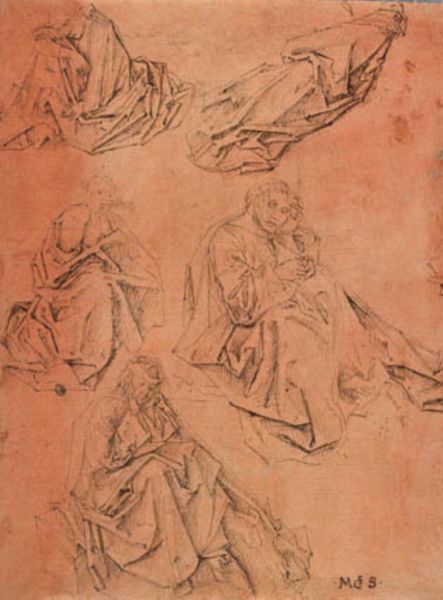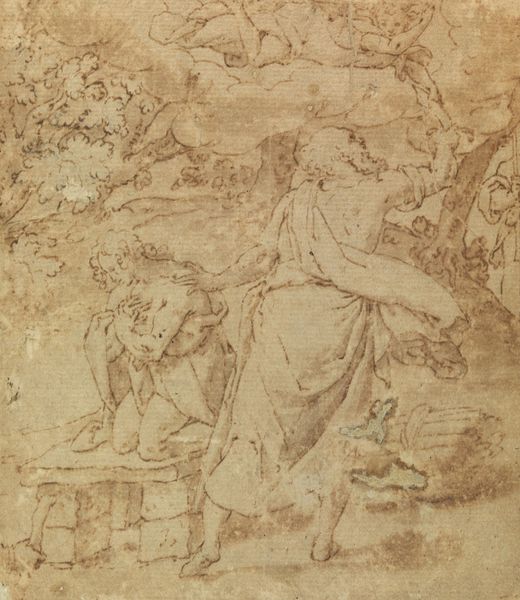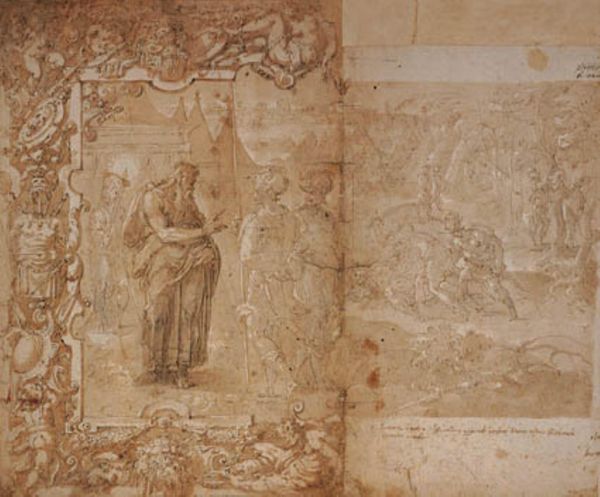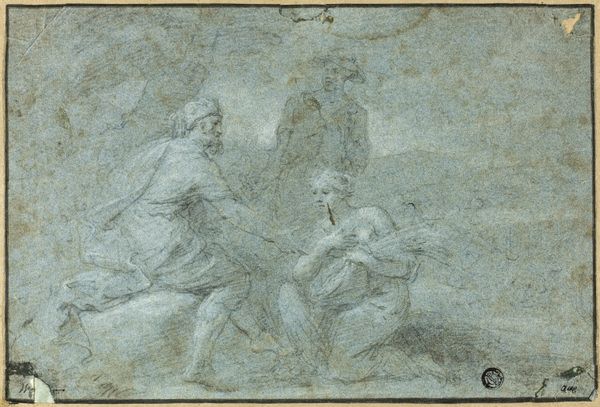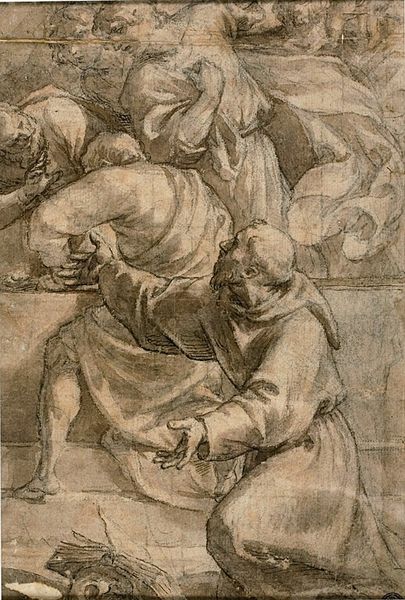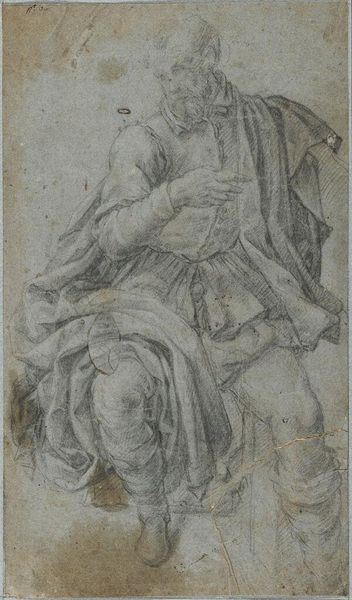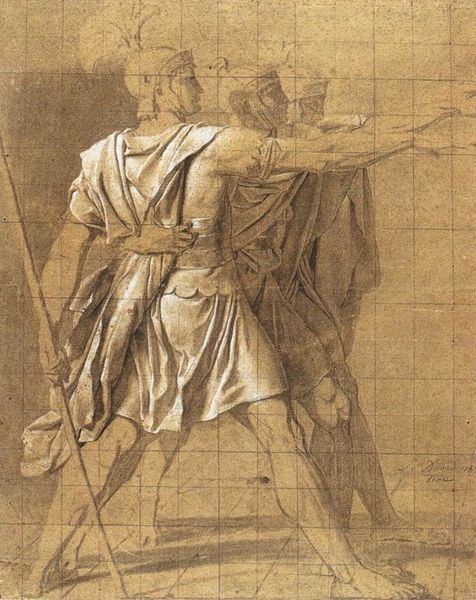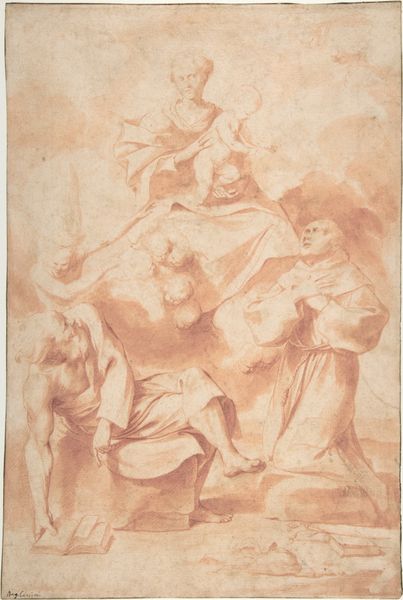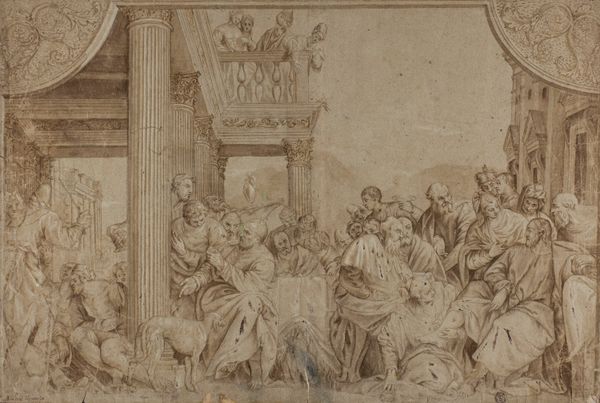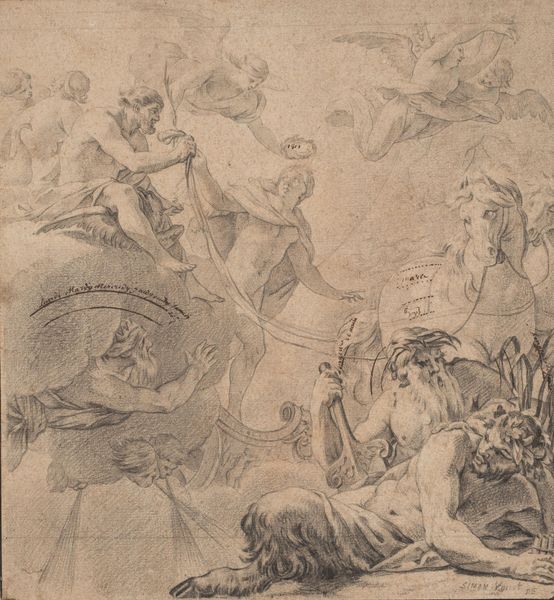
drawing, charcoal
#
portrait
#
drawing
#
charcoal drawing
#
figuration
#
11_renaissance
#
charcoal
#
history-painting
#
italian-renaissance
Copyright: Public Domain: Artvee
Curator: This drawing, made with charcoal, depicts the prophets Hosea and Jonah, and it comes to us from the hand of Raphael, dating back to around 1510 during the Italian Renaissance. Editor: Whoa, my first impression is serious biblical drama! It feels intensely theatrical even just in charcoal—the light, those brooding figures… like backstage at some divine play. Curator: Exactly. Raphael created this as a preparatory study. Commissioned by Pope Julius II, this artwork served as inspiration for the frescoes Raphael painted in the Vatican’s Stanza della Segnatura. We see the prophets, each holding tablets, perhaps inscribed with their prophecies, embodiments of divine knowledge and foresight. Editor: You know, seeing the angel hovering behind Jonah, pointing skyward, is what really strikes me. There’s a restless energy, even though it’s a preparatory sketch. You can feel the artist wrestling with the composition, almost a spiritual exploration happening right there on the page. Curator: The positioning of these prophets, combined with the architectural framework, certainly alludes to their role in bridging the divine and earthly realms, and this relates to a growing public interest in humanist ideals. The Renaissance emphasized direct engagement with classical texts and promoted rational thought and individual agency, influencing even sacred art like this. Editor: It’s wild how he makes charcoal feel so luminous. Look at the drapery—the folds have this real weight and flow. It is fascinating seeing art, made for the elite and powerful, gradually democratizing itself as we approach the Renaissance period, as well as a growing population moving into urban life. It reflects how, socially and culturally, things were gradually starting to open up. Curator: I agree. Studying Raphael’s work reveals a society in transition, navigating ancient wisdom with new perspectives. The prophets embodied both spiritual authority and human intellect. It's interesting to see how Renaissance art encouraged a re-examination of established social norms through its engagement with classicism and developing humanism. Editor: Yeah, these guys are definitely pondering more than just fire and brimstone. Well, after really absorbing it, this charcoal piece, although historical and tied to its time, truly does remain deeply evocative! Curator: Indeed! Raphael has definitely left us much to consider when we analyze the context of his works.
Comments
No comments
Be the first to comment and join the conversation on the ultimate creative platform.
